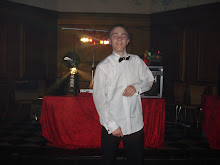Truth Representation Reason for change - media theory and analysis where possible
Tony Benn was postmaster general in charge of shutting down pirate radio. He was a labour minister Kenneth Branagh as Minister Dormandy (loose parody of Benn) an implied Tory he aims to shut the station down Stereotype of austere minister, humourless, creating a binary opposition to the DJs.
Musical output and style of presentation of the first (pirate) station ( Radio Caroline) very similar to BBC radio light programme Compares restricted and very non recorded output of the BBC. 3 radio services of 1966. One liberal service Anti-Elitist, pluralistic ( pop culture) showing how people can challenge governments
By the late 1960s, Britons were able to enjoy a host of media Collective identity of naïve Britons huddled around radio for pirate stations Mythological image of 2nd world war and 1950s families huddled
Most music played on most radio stations was classic with only about 45 minutes pop or rock played in the day Radio rock playing rock and roll 24/7. Constant reference to this fact. To show the significance and showcase the importance of the emergence of Rock and roll music.
Radio One DJ Emperor Rosko Represented in the film as the Count To keep the idea of the characters the same but not make them too similar or the film would lose it’s personal identity
The significance of Jazz on the BBC Not mentioned in the film Keep the emphasis on the importance of Rock and Roll for this narrow area of music culture
Tony Blackburn breakfast disk jockey during 1960s Chris O’Dowd’s character Simon is used for the film Showing the more modern equivalent of Blackburn and portraying him in a more humorous way to suit Curtis’ style of directing.
Families used to be huddled round the radio for the broadcasts Shows not just families but also others, such as kids staying up instead of going to bed To try and link it to present day audiences and in so doing help the audience of the film to relate to the listeners of Radio rock
Many previous generations were brought up on the Radio Rock’s type of music Portraying the vast audiences so effectively For the older members of the viewing audience to relate to their childhood
All of the real pirate radio ships of the 1960s used single-mast antennas Ship that was used for filming used twin mast antennas Better sound quality to make the film more professional
Tuesday, 27 October 2009
Subscribe to:
Post Comments (Atom)

No comments:
Post a Comment